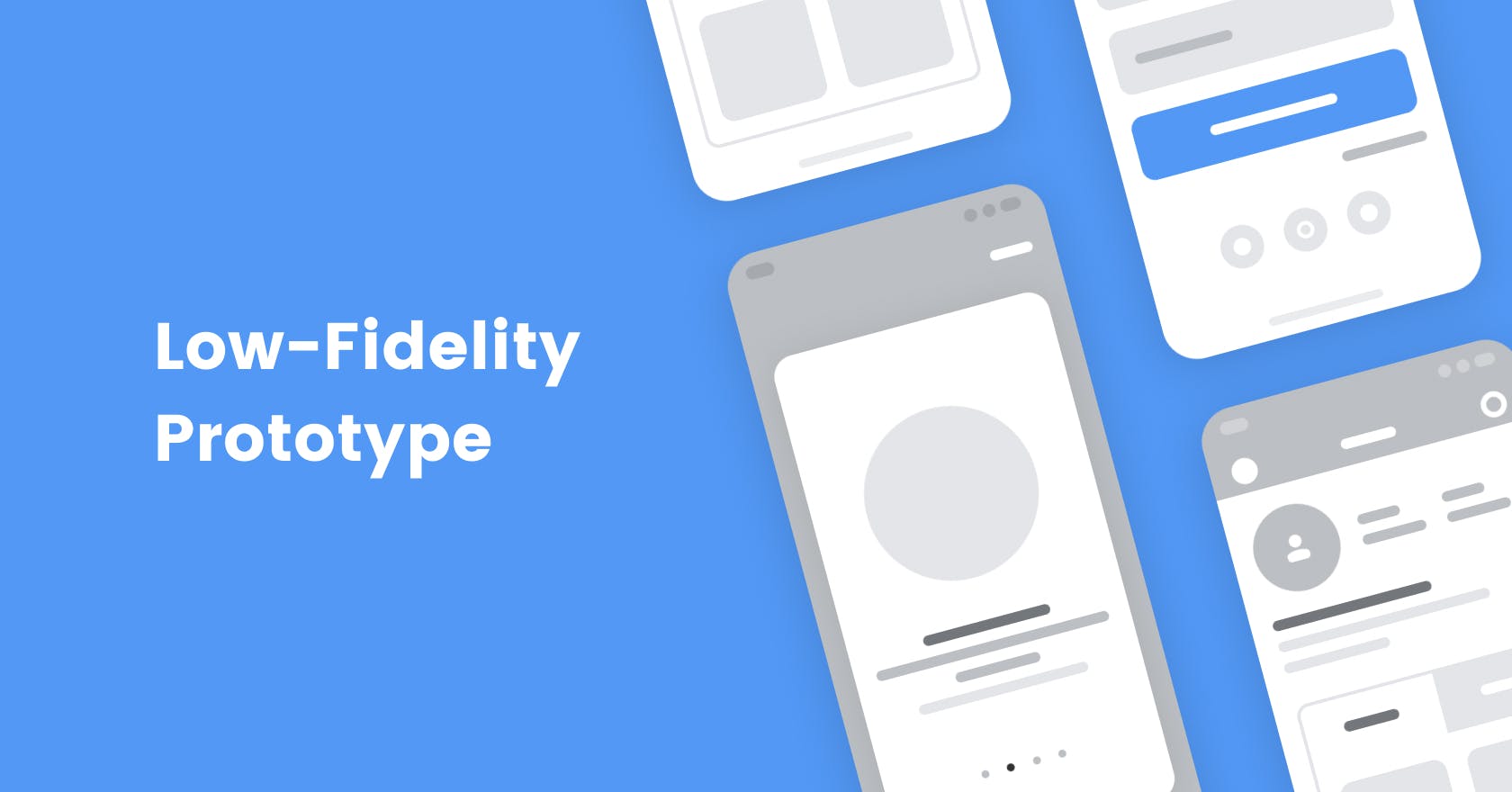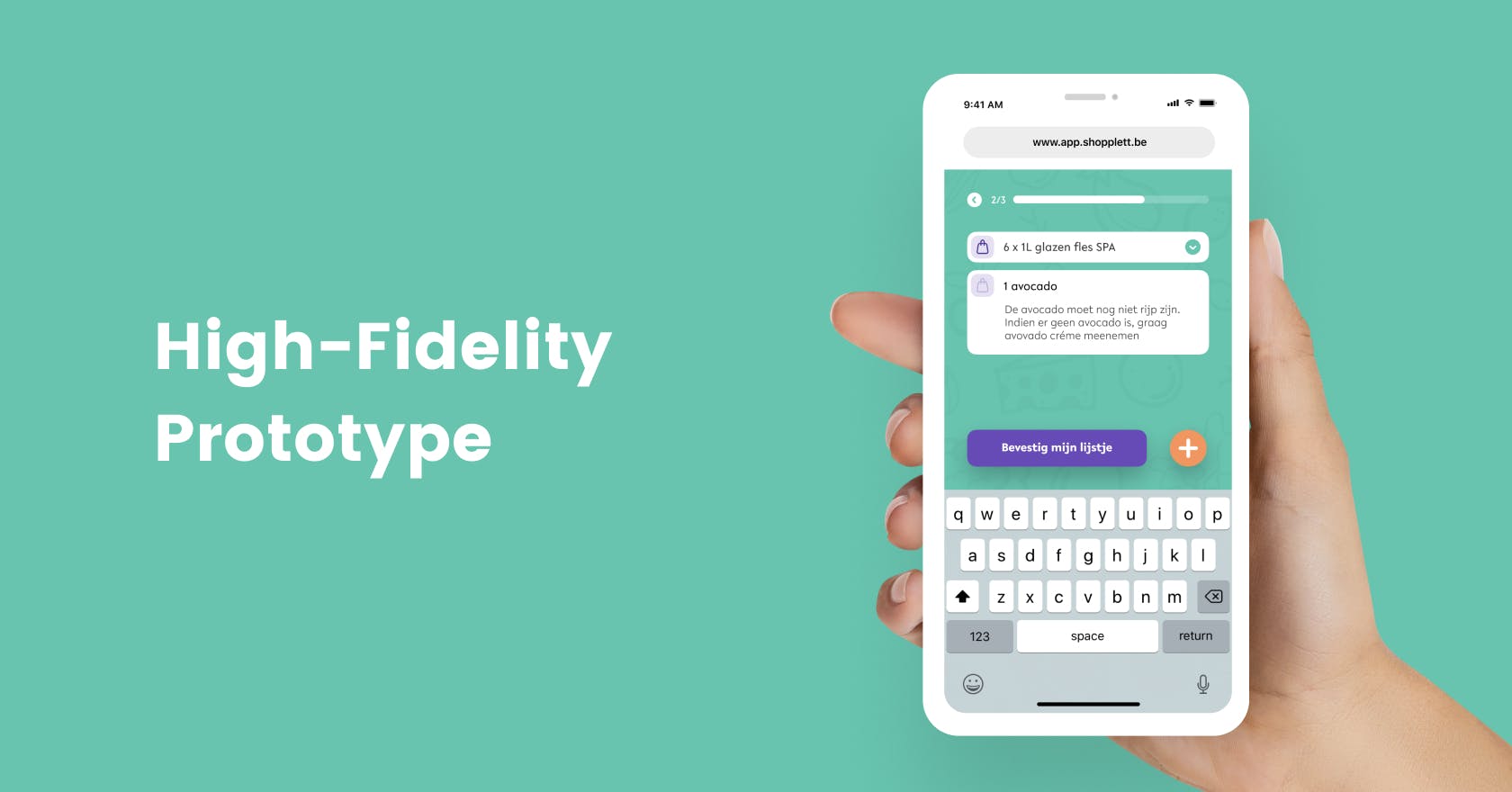Why is prototyping crucial for your digital product?
The "design process" of a product, from a concept to a product's physical existence, is something the customer rarely thinks about. Digital Product Designers have to make sure that the product is loved by their potential customers. That their solution is going to meet the needs of the client just as they imagined.
By developing a prototype of your solution, you're able to validate your concept. In this way, before wasting money on creating a product that probably wouldn’t work the way you've expected, you can make the required adjustments.
You will never be completely sure that you will succeed if you don't show your product to your potential customers.
So what exactly are prototypes?
You will see 'prototyping' listed more and more as a necessary skill for a Digital Product Designer when scrolling through design positions on LinkedIn, no matter whether it is for UX or UI.
Prototypes are early mock-ups of a proposed product. Through the development of a tangible prototype, designers and investors can physically feel and see the outcome, understand its functionality, and refine the product based on feedback. The key point to emphasize is that the prototype is not the final product, but a 'beta version' instead.
Prototyping is a beta version of the product to test with and to be learned from.
Without involving a developer, you can mock up any view and interaction so that it can be experienced the same way as a fully developed product. In your app, you can demonstrate all the features you want to incorporate, validate your concept, and verify the overall UX strategy. Depending on your needs and the project process you choose, the purpose of a prototype can vary.
Different prototypes
You're only restricted by your imagination when it comes to creating a prototype.
In general, there are two sorts of prototypes: low fidelity (low-fi) and high fidelity (hi-fi) ones.

Low fidelity prototypes
When you want to try out a general idea, low fidelity prototypes should be generated to see if your customers understand the product's concept and functionality. These are very simple and inexpensive to make and as the final result is not feasible, you should not focus too much on your prototype's 'looks'.
Instead of getting distracted by the UI, the lack of colors and nice designs help individuals focus on the tasks they are assigned. At this point, validating your concept is the priority, you get more useful feedback when you remove external factors. The fact that it is low fidelity, and therefore a draft version, often makes individuals trust in sharing their thoughts without thinking about hurting anyone's feelings.
“Usability is about people and how they understand and use things, not about technology.” - Steve Krug, Don’t Make Me Think, Revisited: A Common Sense Approach to Web Usability (3rd Edition)
An example of low fidelity prototypes are wireframes, they are a rough visual representation of your concept. In low-fi wireframes you don't have to concentrate on issues like copying or ideal images, you can use patterns that are recognizable and understandable for your target users. The primary objective is to evaluate the app's flow and general conduct.
With a low-fi wireframe, you can test out a concept, flow, or interaction and reuse it later on while creating the final UI.

High fidelity prototypes
It is definitely worth considering creating hi-fi prototypes, particularly if you want to see your proposed product "in real life" and test your app's interactions and UI elements.
Customers won't see a difference between your prototype and a real product if a hi-fi prototype is done right. So keep in mind that if your product serves its purpose, testing it might be the ultimate solution.
It will also be more meaningful to get feedback on a hi-fi prototype because people wouldn't have to imagine looking at it, everything would be right in front of them. Depending on what you want to test out and what sort of action it's intended to imitate, you can create semi-interactive prototypes or fully interactive ones.
Don't be afraid of using various tools and combining different media. As long as it serves your purpose.
Which tools are the best to create such a prototype?
Ask yourself a few questions. Do you want to design and build a completely interactive prototype, so that your product can be simulated in a real-life situation? Do you want to clarify and test your concept on real users? Or do you want to check if your users will be suitable for the created UI?
The general rule will be: for more advanced prototypes you have to use more advanced software to imitate a real-life product.
Simple tools:
More advanced tools:
The main advantages of creating a prototype
Significantly reduce errors in design
Design teams can make improvements early by using prototypes, minimizing additional time and costs. Because, if a product is near completion, it will produce more work and raise the budget by making some drastic adjustments.
If you follow agile methodologies like us at Nightborn, prototyping is even more beneficial as you can kickstart your story's requirements at this early stage. Of course, your prototype has to be tested in high fidelity for final requirements.
“Vision starts with a firm foundation and carries through with design principles” — Lexi Thorn & Scott Maywood-Bryant (ANZ)
Prototypes allow user testing
"User testing" offers useful input about its product to designers. Because each product has a target audience, and the audience is going to have the final say at the end of the day. The design team will make alterations early on with their insights. This will help you find your product issues before you spend any time in high fidelity or code.
“User-centered design means working with your users all throughout the project” - Donald Norman
As stated above, there are many programs and software to create prototypes, but there is also software to extensively test these prototypes. Maze.design (or Maze) for example is such a program, this is also used with us at Nightborn.
Maze is a user testing platform that brings actionable insights into the design process.
Maze can run tests with prototypes for desktop, mobile, or tablet applications made in Figma, InVision, Sketch, Marvel, and Adobe XD. You just need to copy and paste the link into Maze. The tests are with actual users and gain qualitative insights you can act on instantly,
The overall understanding of the design is enhanced by prototypes
You get an opportunity to work on a tangible artifact together with your team, which will lead to better ideas being generated.
Creating any product involves a team of designers who can communicate their ideas and concepts with each other effectively.
It’s a useful reference for your developers. Prototypes services help illustrate the final product, allowing the design team to comprehend the product’s function, and target audience. It’s also easier to provide feedback and see whether the product has a specific limitation. Prototypes ensure that their function is fulfilled by the product they are making. Because a small change in proportions can make a big difference and alter a product's look and function completely.
Prototypes are attractive features for investors
A product is meant to be designed for consumers. It’s normal for a product to hit financial patches and require an expanded budget. Investors are not interested in investing money on a design that once it's produced it "could" work. They want the product in its physical form to be seen. That's why having a prototype is an appealing feature if a product needs additional investment.
Do it now!
Ready to create your interactive prototype? Be sure to check out this extensive guide for improving UX of your product and why you should consider an MVP and how to create an effective one?
“Fail often so you can succeed sooner” - Tom Kelley, best-selling author of Creative Confidence, The Art of Innovation and The Ten Faces of Innovation as well as a partner at the renowned design and innovation consultancy IDEO.
There’s nothing more true than that. Creating a prototype will expose your failures and lead you to a much brighter future and success. It opens your eyes to things you haven’t thought of and gives you new design perspectives.
The point of this article is to highlight the importance of validating your ideas quickly and communicating effectively with colleagues and stakeholders.
Final words!
If you liked this article, feel free to share it. Get in touch if you have any questions or any examples you want to share.
If you liked this article, you might also like:
How Nightborn created a challenging culture between designers and developers? 🙌
How Cross-Platform Development Improves Client Experience and Satisfaction
How to choose the best UX/UI Design and app development agency?